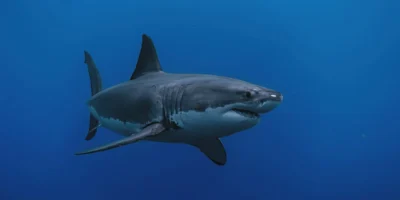Great white sharks are often considered loners, but a new study on Guadalupe Island off the coast of Mexico paints a more nuanced picture: the predators do in fact display social behaviors and sometimes spend extended periods together — up to 70 minutes patrolling side by side is not an exception but suggests deliberate, non-random encounters.
The research team led by FIU marine biologist Yannis Papastamatiou and doctoral student Sarah Luongo relied on an innovative combination of tracking technologies for the study: so-called “super social tags” recorded both movement patterns and interactions between the sharks. These tagged great whites were monitored with cameras and sensors for up to five days. Particularly fascinating was the integrated receiver system, which was able to detect other tagged sharks in the immediate vicinity.
Individual hunting strategies and social benefits
The results show that great white sharks employ different strategies in the clear waters of Guadalupe than their counterparts in South Africa or Australia. There, in murky waters, they rely on surprise attacks. At Guadalupe, however, both prey and predator are equally visible, making the hunt a real challenge.
Analysis of the video data revealed different hunting methods: some sharks preferred to hunt during the day in shallow waters, others in deeper waters or at night. Prey such as turtles or sea lions often managed to escape the predators through clever evasive maneuvers. This is precisely why the sharks’ social contacts may be crucial: as Papastamatiou emphasizes, the animals can share information and advantages by being close to successful hunters – without explicitly cooperating.
Although the number of sharks studied was limited, the findings add a new dimension to the image of the solitary apex predator. Advancing technology will allow researchers to gain even deeper insights into the social behavior of these fascinating animals in the future.
“Technology now can really open up the secret lives of these animals. We’re going beyond tracking where they are and where they go. As the technology gets better, we can keep answering more questions.” — Yannis Papastamatiou





